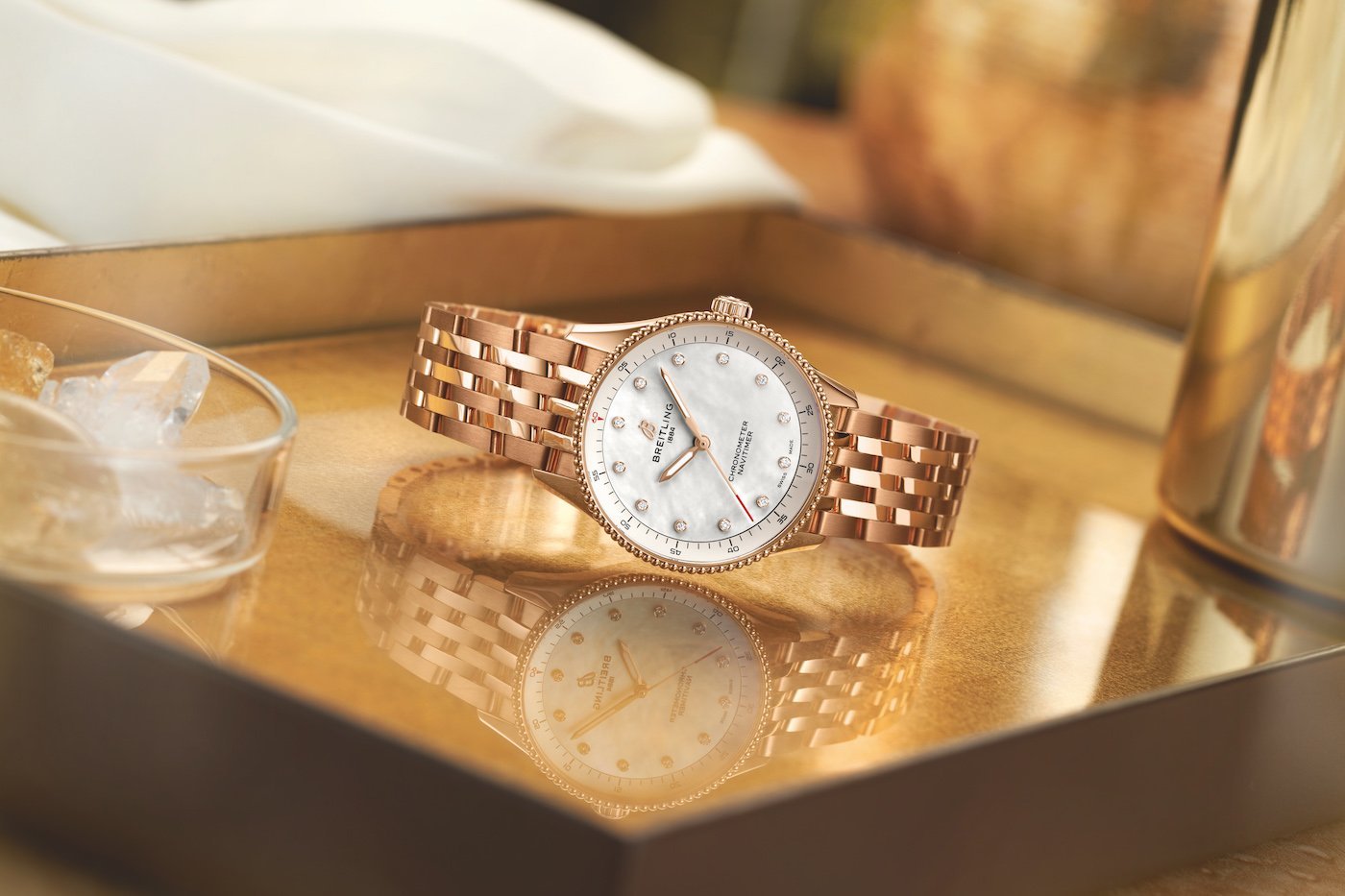reitling stands out as a pioneer among watchmaking companies taking an ESG (Environmental, Social and Governance) approach. The brand has set itself ambitious targets and is committed to reporting on its progress each year.
Aurélia Figueroa, Global Head of Sustainability, outlined the brand’s objectives last year (in an interview to be found here). Where does the brand stand today in its ESG journey?
One year later, she answers our questions again.
Europa Star: Last year you detailed your policy and objectives. Your Sustainability 2023 report has just been published. What are your key achievements? Where do you stand in relation to the objectives you set?
Aurélia Figueroa: Our greatest achievement is that we have succeeded in aligning our emissions reduction plan with the Science Based Target initiative (SBTi) that we set ourselves. This applies to Scopes 1, 2 and 3, with targets for 2032 and 2050. This outcome is a result of changes to how we source raw materials – our biggest source of emissions – the commitment of our suppliers (more than 75% to date) and the fact that we have obtained the Fair Pay label globally. I am also very pleased with the creation of our Impact Diamonds Funds with the Amani Institute. Our partner for our lab-grown diamonds has switched to 100% renewable energy, significantly reducing its carbon footprint. And we also continue to focus on having a positive impact on the communities where our suppliers are based.
-

- The Touchstone mine in Colombia, a member of the Swiss Better Gold Association, is Breitling’s gold sourcing partner.
What are the major obstacles you face on the path to greater sustainability?
In my opinion, the biggest challenge is understanding how to fully engage our stakeholders, i.e. our shareholders, employees and partners. We need to understand each others’ needs and find a way to meet them, while at the same time incorporating the efforts required to achieve our ESG objectives. To support this we organise multiple events and evaluate those that work best. For example, we run vegetarian cooking classes, beach clean-up days and forest action days. We need to get participants to ask themselves key questions: What is our theory of change? What changes are we prepared to make? We then reflect on what emerges from these events and determine the best ways to really engage people to achieve our goals. The commitment of the whole company and all our partners is essential. Our staff are fully committed to this mission, and our suppliers have made a formal commitment. Through this internal and external collaboration, we have succeeded in achieving alignment with our objectives for 2032 and 2050.
-

- Impact categories and their reduction targets for 2032 and 2050
-

- Change in Scopes 1, 2 and 3 contributors in 2023 compared with 2022
As was the case last year, this year’s biggest sources of impact are materials extraction and transport (employees, goods, business travel, events). How are you continuing to reduce them?
Extraction accounts for 40% of our emissions. It’s our biggest item. We consumed 902 kg of gold in 2023 (compared with 602 kg in 2022), an increase of 50%. However, we have managed to reduce our emissions in this area. How have we done this? Not by offsetting them, which has no impact on the absolute value, but by investing directly in the Colombian mine with which we work (a member of the Swiss Better Gold Association’s artisanal, small and medium-sized mines – ASM). We electrified the plant with renewable photovoltaic energy. By working closely with this key supplier, we can also check that the impact on biodiversity, deforestation and water use is controlled. With regard to transport, we have put in place systems to encourage our employees to use sustainable modes of transport to get to work. We organise events locally to keep travel to a minimum. Efforts are being made on all fronts.
Your turnover is expected to exceed one billion francs this year. You’re hiring, you’re opening new stores. Is this compatible with a real reduction in ESG impacts?
That’s exactly what we’re aiming for. Luxury is obviously a story of craftsmanship, heritage and the transmission of beauty. But it is also an expression of social status. It embodies a kind of ’rite of passage’, where people grant themselves the right to reward themselves. We need to recognise and acknowledge this. Demand for products that reflect social status will continue to exist. It’s up to us to join the debate and see how we can make it compatible with greater sustainability. I believe this is possible with a strong commitment and by allocating the necessary resources to align with the objectives we want to achieve. The figures are there to prove it. Our 2023 turnover has increased by almost 30% compared with 2022, and despite that we have managed to achieve an absolute reduction of 6.6% in our global emissions. I believe that a genuine and deep commitment from everyone involved has made these results possible. The fact that a portion of management remuneration is also linked to the achievement of ESG targets also shows how serious we are about this approach.
-

- Summary of changes in emissions by Scope in 2023 compared with 2022
So do you think frugal luxury is possible?
For this to happen, there needs to be a strong will at both corporate and personal level – a deep desire to reduce our environmental impact. First of all, we need to become aware of that impact. Then we need to analyse it objectively and transparently. Finally, we need to decide what we want to define as luxury in our lives, and what we really “need”. This can also mean simply buying more locally, more second-hand. In the end, every gesture counts. Through personal awareness, collective effort, and developing partnerships, we can get there.

















































